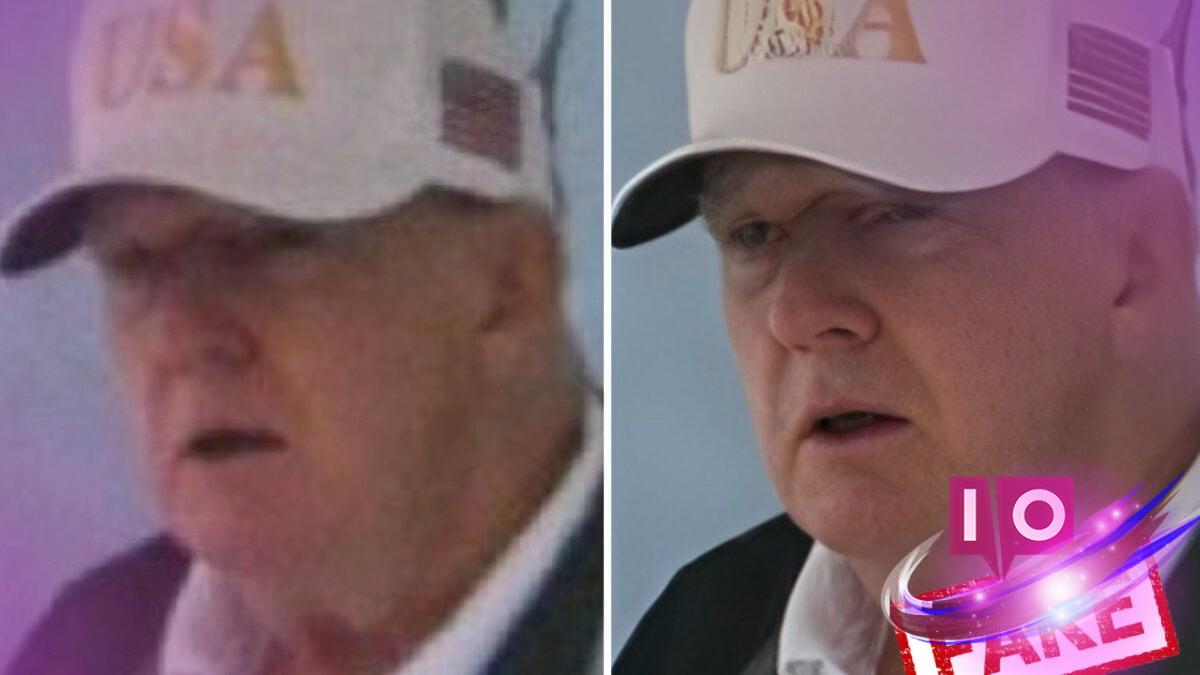As speculation surrounding Donald Trump’s health escalated over the holiday weekend, social media buzzed with rumors and concerns. Many Americans began to wonder if the former president was facing serious health issues, prompting some to utilize AI tools in hopes of gaining clearer views of grainy photographs of Trump. These photos, often resembling blurry wilderness shots of elusive creatures, led to rampant speculation about his condition.
However, relying on AI for clarity in these instances is largely futile. These enhancements can mislead rather than reveal truths, adding confusing elements that weren’t present in the original image.
The Emergence of Speculation
The initial stir came when a user on Bluesky, Christopher Webb, posted a low-quality image purportedly showing Trump leaving the White House. He claimed to have enhanced the photo, prompting concerns about a curious mass appearing on Trump’s forehead. This speculation spiraled, with users linking the unexpected sight to medical emergencies.
Such phenomena show how quickly information, or misinformation, can spread across the internet. The AI-enhanced image, which depicted an unusual bump, fueled discussions that Trump might be experiencing severe health issues, going so far as to evoke terms like “decompressive hemicraniectomy” based on ill-informed assessments.
Can AI Truly Enhance Images?
Interestingly, AI-generated images often do not depict reality accurately. In fact, the enhancements made can create more confusion. Critically examining the original versus the AI-modified image provides a stark contrast. For instance, subtle shadows or features on a person’s face may be exaggerated in an AI-enhanced photo, leading to misleading conclusions.
How Do AI Tools Mislead User Perception?
The tools that claim to enhance images do not create a more accurate representation. They often refine clarity while distorting the actual content. A comparison of details, such as the flags on Trump’s hat, showcases this flaw. AI removed critical details like stars, focusing solely on stripes, leading to a misleading depiction of reality.
Do These Tools Fuel Conspiracy Theories?
AI’s role is not a recent development; the misuse of such tools for creating conspiracy theories dates back years. A notable incident happened during the 2022 Oscars when AI was employed to analyze footage of the Will Smith and Chris Rock encounter. Those enhancements led to wild theories suggesting there was a cushion involved in the slap, purely because the enhancements misrepresented natural facial contours.
What About Older AI Tools?
As the technology has evolved, earlier AI tools have similarly produced absurd results. For example, a tool known as Face Depixelizer gained notoriety for rendering pixelated images into distorted, often downright comical representations of people, showing the inherent biases in AI’s learning processes.
Should You Rely on AI for Clarity?
While AI upscaling has its merits in specific fields, such as video game design or artistic interpretations, the confusion it creates around facts and real imagery should not be overlooked. This becomes particularly crucial in sensitive contexts such as health-related inquiries.
It’s natural to have questions about public figures like Trump, especially given certain visible anomalies. Many have remarked on recent black marks observed on Trump’s hand, igniting more curiosity. Yet, rather than jumping to conclusions from unverified images, credible sources should be consulted.
Is it true that social media posts suggested Trump was missing due to health decline? Often, these assumptions are rooted in a misunderstanding of normal presidential routines, such as medical teams traveling with him for emergencies.
Have conspiracy theorists pointed out that the White House flags were lowered? This occurred to honor shooting victims, not as a signal of impending death.
When roads around Walter Reed hospital were closed, speculation spiked, but these closures often happen during holiday weekends for logistics. Such reasoning demonstrates that much of the speculation can stem from innocent misinterpretations.
In the end, while we may be curious about Trump’s health, relying on AI tools for clarity is counterproductive. These enhancements often mislead rather than inform. Maintaining a critical approach and turning to verified news sources will lead to a clearer understanding.
Curiosity about public figures is understandable, but it’s crucial to approach information critically. Consider exploring more about technology’s impact on media by visiting Moyens I/O for more insights.
